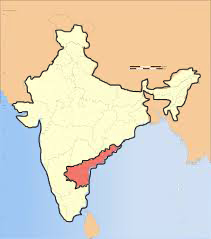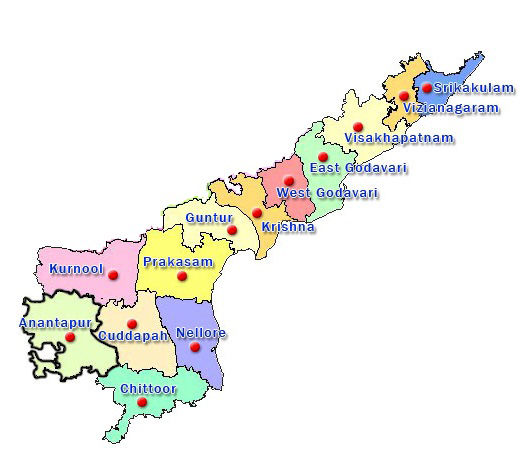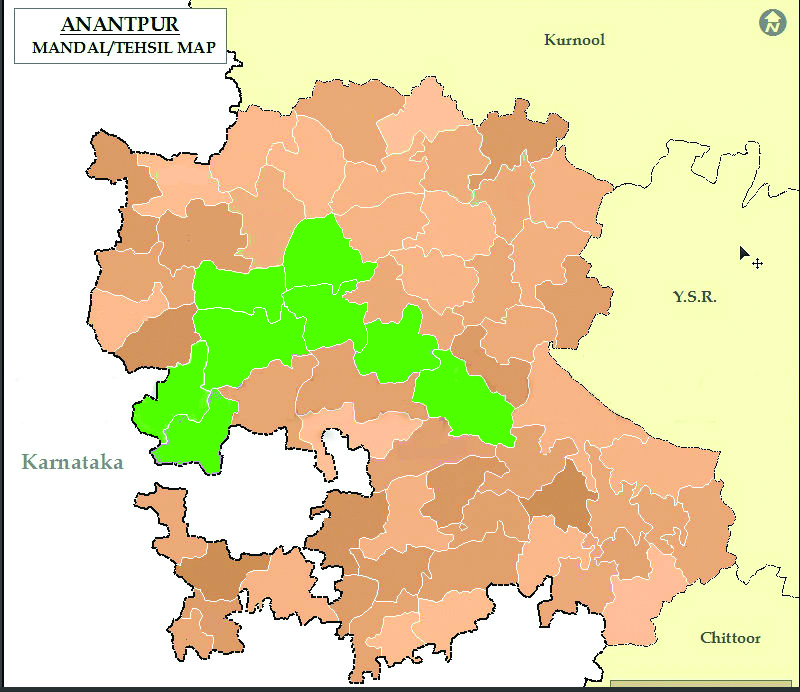COMPLETED PROJECTS
Six Watershed Development Projects have been implemented between 2010-16 with AF as Project Facilitating Agency (PFA)
PROJECT UNDER WATERSHED DEVELOPMENT FUND
BATTUVANIPALLI
PROJECT COMPLETION REPORT
DASAMPALLI
PROJECT COMPLETION REPORT
GARUDAPURAM
PROJECT COMPLETION REPORT
GUBANAPALLI
PROJECT COMPLETION REPORT
MALLIPALLI
PROJECT COMPLETION REPORT
PAPAMPALLI
PROJECT COMPLETION REPORT
PROJECT UNDER SUSTAINABLE DEVELOPMENT PROGRAMME
GUBANAPALLI
PROJECT COMPLETION REPORT
MALLIPALLI
PROJECT COMPLETION REPORT
Summary of Watershed Development Projects approved by NABARD.
Sl.No. | Name of Watersheds | Mandal | Total Extent (ha.) | No. of families covered | Outlay (Rs. in crores) |
1 | Garudapuram, | Kalyandurg | 1000 ha. | 250 | 1.12 Cr. |
2 | Mallipalli | Kalyandurg | 1050 ha. | 450 | 1.16 Cr. |
3 | Papampalli | Kalyandurg | 1160 ha. | 550 | 1.24 Cr. |
4 | Gunthapalli | Kalyandurg | 1175 ha. | 585 | 1.35 Cr. |
5 | Dasampalli | Kalyandurg | 950 ha. | 540 | 1.02 Cr. |
6 | Battuvanipalli | Kalyandurg | 975 ha. | 275 | 1.37 Cr. |
TOTAL | 6310 ha. | 2650 | 7.26 Cr. | ||
1. Organising Village Watershed Development Committees and their institutional development:
- Awareness building on watershed development
- Formation of Village Watershed Development Committee
- Capacity Building for watershed committees
- Small Group formation
- Organisation of MACs.
2. Soil and Moisture conservation activities:
Various types of soil and moisture conservation activities are taken up in the cultivated lands, including earthen contour bunding, stone contour bunding, border bunding across the slope etc.
3. Rain Water Harvesting and drainage line treatment:
1) Gully plugs 2) Dug out ponds 3)Rock fill dams 4) Check walls 5) Check dams 6) Percolation tanks7) Diversion drains 8) Water absorption trenches9) Farm contour Bunds 10)Farm ponds.
4. Vegetation and Biomass Development interventions:
1)Bund planting, 2) Common land plantations 3)Seed dibbling on farm bunds etc.,
5. Farm production interventions:
1. Tree-based Horticulture 2) Rainfed Agronomical practices 3) Drought-resilient cropping systems
6. Livelihood Support Activities for the landless.
10% of the total budget was allocated for promoting off-farm and non-farm livelihood activities for the landless and other poor.
7. Formation of MACS for post-project sustainability:
Formation of Mutually Aided Cooperative Societies for Post-Project Sustainable Management of Livelihood Funds as well as Watershed Assets.
Process of operationalizing Watershed Development under NABARD guidelines:
The watershed development is takenup in two phases – i) Capacity Building Phase (CBP) and ii) Full Implementation Phase (FIP).
Capacity Building Phase (CBP):
In the CBP the people of the watershed village are prepared for undertaking watershed development programme through “learning by doing” approach Awareness on watershed development was created by village campaigns, Gram Sabhas, formal and informal meetings, PRA exercises; and actual implementation of watershed development activities in 100 ha. area at the ridge portion in the first one year. All appropriate watershed development activities would be planned in the 100 ha. of land and implemented in a participatory approach including mobilization of the mandatory “Shramadan” by the Village community.
Full Implementation Phase (FIP):
After satisfactory completion of the CBP for one year the programme moves to the FIP. When the FIP begins a Grama Sabha would be conducted by P.F.A. to select on consensus 13 to 15 members from among villagers to form a Village Watershed Development Committee (VWDC). The VWDC should have equittable representation for SC & ST communities, small & marginal farmers, landless poor, women, and other weaker sections. The FIP begins with a tripartite MOU between Village Watershed Development Committee, PFA and NABARD. Participatory net planning is then carried out to prepare a 4 year Detailed Project Report. The DPR would be implemented by the VWDC together with PFA in a transparent and participatory process. The progress would be regularly monitored by a third party organization i.e., Foundation for Ecological Security (FES) besides NABARD.
Roles & Responsibilities of Village Watershed Development Committee (VWDC):
- The committee is headed by the Chair Person elected by the VWDC from among the committee members.
- Chair Person is a joint signatory of cheques, along with one team member of P.F.A, to draw funds for implementation of watershed activities.
- The VWDC acts as Project Implementing Agency (PIA) of the watershed.
- The VWDC meets once in 15 days or as and when necessary to discuss, decide and pass resolutions, make payment for works and to review the progress on regular basis.
- The VWDC with the assistance of PFA, selects 3 watershed supervisors from among educated unemployed active youth from the village in order to oversee the watershed project implementation including livelihood activities.
- The VWDC is responsible for selecting the eligible beneficiaries, under livelihood programme,who are the poor and who can take up income generating activities. The selection process is done with utmost transparency.
- The VWDC members are divided into subgroups assigned responsibilities to monitor implementation of various watershed activities.
- The VWDC undertakes field visits to check the quality and quantity of works.
- The VWDC is responsible for making payment for works in a transparent manner through appropriate resolutions.
Role of Watershed Supervisors:
1. Three supervisors employed by VWDC are to undertake supervision of works being executed within the watershed village.
2. The 3 Supervisors responsibilities are divided to supervise the works are as follows:
- Drainage line treatment
- Area treatment, and
- Livelihood activities
3. The supervisors also assist the technical team of PFA, in procurement of labour, materials and measurement of works and ensure quality.
4. They are paid on the basis of their physical and financial performance
5. Regular trainings are imparted to supervisors by the PFA in order to build their capacity in implementation of watershed activities.
AF Watershed Development Team:
AF has vast experience of over 30 years in participatory watershed development. It has sufficient number of human resources who are committed, trained and experienced in technical aspects and in community organisation. They are well trained in all aspects of watershed development activities and in combining the farmers indigenous knowledge with watershed science. The team is also well trained in enabling peoples participation, consensus decision making, conflict resolution, developing village leadership and community based institutional development.
Facilitating Convergence and Synergy:
AF also facilitated the convergence and synergy of programmes at Village level with other agencies like RDT, DWMA (MGNREGS) Dept., of Agriculture, Micro Irrigation Project etc. Examples are: drip irrigation and solar pump sets are provided by RDT to the dry land horticulture farmers in the watershed villages. Dry land Horticulture programme of MGNREGP is mobilized for farmers in watershed villages.
Post-Project Sustainability:
The actual implementation of all planned watershed activities was over by 31.12.2015. By the end of final year(2015-16) the VWDC promoted a village level Mutually Aided Cooperative Society (MACS) to ensure post-program sustainability following the legal and administrative procedures as per the MACS Act. This arrangement ensured peoples ownership and responsibility for effective post-project sustainable management.
Accordingly MACS have been registered in all the 6 project villages and three MACS viz., Battuvanipalli,Garudapuram and Mallipalli are in operation with some facilitation by PFA. The other 3 villages are still to operationalize MACS, though registered.
Watershed Development Fund (WDF):
The beneficiaries of the watershed activities contribute certain amount as beneficiary contribution in cash to a fund at village level called Watershed Development Fund (WDF). This WDF is also managed by the MACS for the post-project sustainability i.e., the proper and timely maintenance of the watershed assets created under the program. The livelihood amount released by NABARD was also managed by the MACS which is utilized as revolving fund on sustainable basis for enhancing livelihoods of the poor.
Watershed Projects completed by December 2015
Six watershed development projects were implemented successfully by Accion Fraterna as PFA. The projects were closed by Dec’2015 after completion of project period. The Project Completion Reports(PCRs) were submitted to PMU(Project Management Unit), NABARD.
Description of Activities:
1. Farm Bunding: Formation of contour bunds in rain fed agricultural lands is one of the prime activities in the programme. Bunding with cross sectional area of 0.5 sq.mt. was carried out in rain fed farm lands across the slopes. These interventions arrest soil erosion and increase the water regime particularly sub soil moisture in rain fed lands to increase productivity. The bunds are also fortified with vegetation


2.FarmBunding with stone revetment: Rain fed farm lands with slopes greater than 6% slope, were treated with bunding and strengthened them with stone revetment on the upstream side. The bunds besides conserving the soil, harvested run-off water behind the bunds and enhance the availability of moisture to rain fed crops during dry spells.
3.Farm Pond: A life saving structure for rain fed crops. It is constructed with measurements of 8Mt.x8Mt.x2Mt. with side slopes of 1:1, in lowest contours of the farm land so as to collect the water drained from upstream side. The water impounded in the farm pond is utilized to provide lifesaving irrigation to rain fed crops during prolonged dry spells. The inner slopes of the farm pond are lined with cement mortar so as to retain water for a longer period. The Farm Ponds, when lining is not done, would recharge the ground water.

4.Dry Land Horticulture: Rain fed agricultural lands when planted with horticulture tree crops like Mango, jamun, Tamarind, etc., the farmers are assured of sustainable income, every year, besides ameliorating the environment through vegetal cover. The farmer use drip for irrigating the plants if bore well is available, or water the plants manually from the Farm Ponds. The number of plants per Acre is 70. Commercial yield starts from 5th. Year. The farmer normally get an income of a minimum of Rs. 8000/- to Rs. 10000/- per acre if managed properly.

5.Percolation Tank: Percolation tanks harvest rain water and increase the ground water level, through recharge. They would help to bring additional area under irrigation or stabilize the existing bore wells. The percolation tank has the advantage of spreading water in a larger area, thereby facilitating quick ground water recharge. Also it helps in increasing the sub soil moisture in its surrounding area and hence greenery. The water stays generally for 5 to 6 months and the water is used by cattle for drinking and people also use for washing clothes, protecting rainfed crops etc. Thus the percolation tanks have multiple uses.
 Percolation Tank ,Gubanapalli
Percolation Tank ,Gubanapalli
7. Convergence with other Programmes: Farmers seize opportunities to make use of resources from other Organisations and Government departments, through the facilitation by AccionFraterna. Nearly 35 farmers of Battuvanipalli ,Mallipalli, and Garudapuram watershed villages, are provided with solar pump sets and drip irrigation systems by R.D.T. Many farmers have excavated farm ponds under MGNREGS in their farm lands for critical irrigation to save crops during dry spells.
 Solar Pump set ,Mallipalli.
Solar Pump set ,Mallipalli.
NABARD WATERSHEDS CONSOLIDATED ACHIVEMENT REPORT AS ON 31.05.2016
Name of watersheds: Battuvanipalli, Papampalli, Mallipalli, Dasampalli, Garudapuram and Gubanapalli.
S. | Components of Treatments |
| ||||||
Phy. Quantity | Unit | Area in Ha., | Storage Capacity | Unit | expenditure (Rs) | NO.of Beneficiaries | ||
1 | New Farm Bunding | 108228 | Rm |
| 45456 | Cum | 5928430 | 1800 |
2 | Stone Outlets | 102569 | No |
|
|
| 2430787 | 1200 |
3 | Farm Ponds | 140 | No |
| 16800 | cum | 2801416 | 900 |
4 | Afforstation Seed | 802 | Kgs |
|
|
| 108009 | 140 |
5 | Farm Bunding with Stone Revetment | 18877 | Rm |
|
|
| 3465633 | 210 |
6 | Stone Bunding | 13640 | Rm |
|
|
| 6895188 | 900 |
7 | Trench cum Bund | 144 | Rm |
| 288 | cum | 9671 | 2 |
8 | Bund Plantation | 31269 | No | 208 |
|
| 748106 | 1200 |
9 | Block Plantation | 20070 | No | 134 |
|
| 369056 | 9 |
10 | Horticulture | 86680 | No | 495 |
|
| 6351207 | 450 |
11 | Grass Seed | 2679 | Kgs |
|
|
| 111379 | 15 |
12 | Agave Suckers | 47700 | No | 159 |
|
| 119196 | 12 |
13 | Stone Gully Plug | 380 | No | 0 |
|
| 1990927 | 300 |
14 | Sunken Ponds | 4 | No | 0 | 480 |
| 38395 | 4 |
15 | Dug Out Pond | 6 | No | 0 | 720 |
| 106506 | 6 |
16 | Checkdam | 36 | No | 0 | 8000 | cum | 4105625 | 72 |
17 | Mini Percolation Tank | 41 | No |
| 18000 | cum | 2350635 | 121 |
18 | Rechage of Wells | 1 | No |
|
|
| 7875 | 1 |
19 | Household Plantation | 928 | No |
|
|
| 186464 | 928 |
20 | Rock Fill Dam | 118 | No |
|
|
| 985434 | 90 |
21 | Avenue Plantation | 2090 | No |
|
|
| 58365 | 42 |
22 | Flood Control Bund | 3 | No |
|
|
| 111896 | 3 |
23 | Diversion Drain | 2951 | No | 0 | 0 |
| 1066570 | 46 |
24 | R.O. PLANT | 6 | No |
|
|
| 1237032 | 1400 |
25 | Water absorption Trench | 1000 | Rm |
| 400 | cum | 241342 | 1 |
26 | Earthen Gully Plug | 1 | No |
|
|
| 45636 | 1 |
| SUB TOTAL |
|
|
|
|
| 41870781 | 9853 |
Our Project Areas




- Kalyandurg
- Beluguppa
- Kudair
- Atmakur
- Rapthadu
- Dharmavaram
- Settur
- Kundurpi


